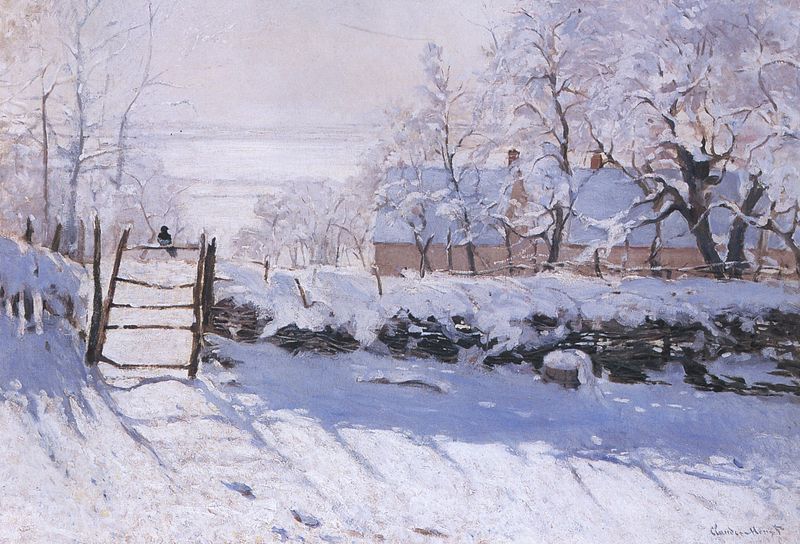| The Magpie | |
|---|---|
 |
|
| Artist | Claude Monet |
| Year | 1868–1869 |
| Medium | Oil on canvas |
| Location | Musée d’Orsay, Paris |
| Dimensions | 35 in × 51 in |
| 89 cm × 130 cm | |
| Famous Paintings by Claude Monet | |
| Impression, Sunrise | |
| The Magpie | |
| Woman with a Parasol | |
| San Giorgio Maggiore at Dusk | |
| Women in the Garden | |
| Snow at Argenteuil | |
| Beach in Pourville | |
| Bridge over a Pond of Water Lilies | |
| Garden at Sainte-Adresse |
The Magpie is an impressionistic winter landscape painting by Claude Monet. It was painted in the winter of 1868-1869 near Etretat, Normandy. Monet would eventually paint 140 winter landscapes. The Magpie is his largest winter work at 35 inches by 51 inches in size. The extremely innovative painting was initially rejected from The Salon, the annual official art exhibition of the Academie des Beaux-Arts in Paris, as being too “coarse”. Nonetheless, it was eventually acquired by the Musee d’Orsay on the Left Bank and quickly became one of its most popular paintings.
Description
A pale, snowy landscape in bright afternoon sun with stark shadows stretches across the canvas. The foreground is entirely snow and shadows. In the mid-ground is a wattle fence with a thick layer of snow. On the far left, a magpie perches on a stile that stretches over the fence. In the background is a long, pale tan brick building partly obscured by winter trees. Like many Impressionistic paintings, when viewed from a distance it has an almost photo-realistic quality. Up close the brush strokes and overall design is very soft.
En Plein Air
In the mid-19th century, painting outside in natural light became popular. Monet was introduced to the concept by Eugene Boudin and it quickly became a favorite of the Impressionist painters of the time. Impressionist painting, with its emphasis on color, light, and shadows, is uniquely well-suited to the en plein air technique. Monet and other artists soon began exploring the possibilities of winter scenes using various shades of white. Monet’s use of multiple colors in his shadows soon became a widespread technique within the Impressionist movement.
Critical Reception
Impressionistic paintings such as The Magpie were a radical departure from the structured, precise styles of painting of the 18th and early 19th century. Although The Magpie and related paintings were a critical and financial disaster for Monet at the time, he later went on to be one of the most successful Impressionist painters, both critically and financially.